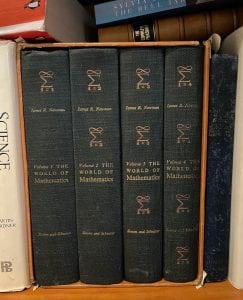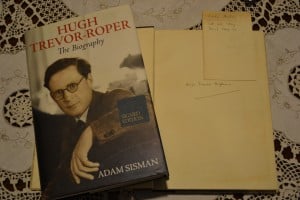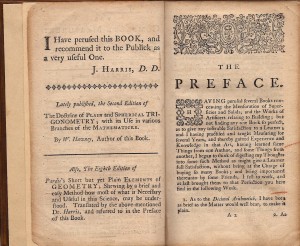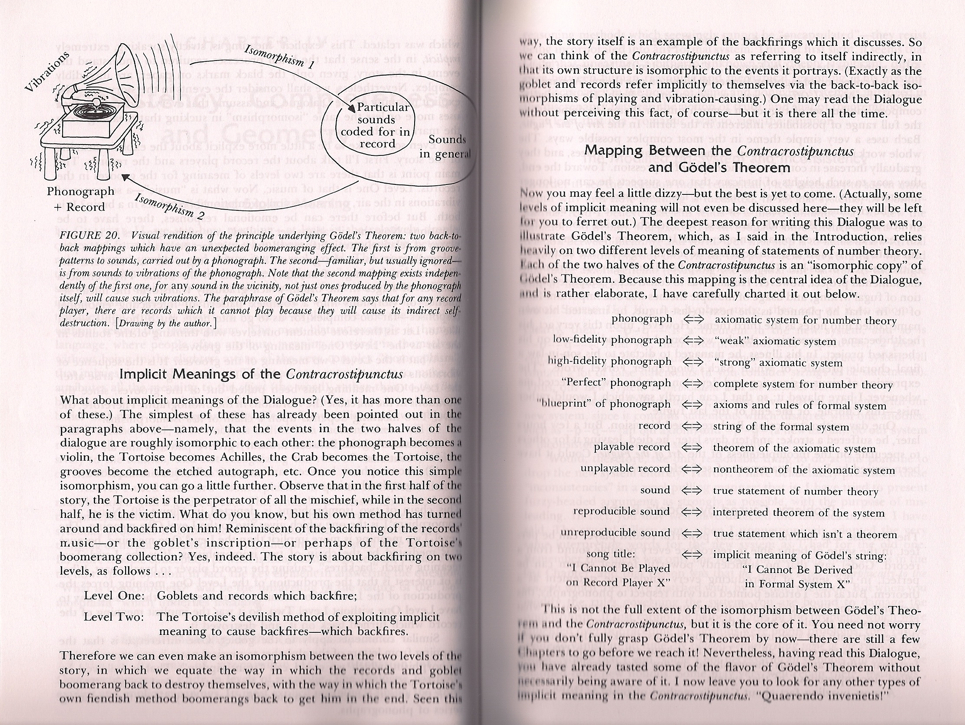No, this page is not about books I’ve written, it’s about favourite books that I own. I was inspired to write this when rummaging around at home and spotted my oldest book, The Complete Measurer. So that’s the book with which I’ll start.
1. The full title of this book, published in 1769 (or, rather, MDCCLXVI) is The Complete Measurer: or, the Whole Art of Measuring. It’s all about … hang on, I’ll leave it to the author, William Hawney, Philomath., to explain why he wrote it (click to read):
 I love the book, partly because I’m keen on mathematics (especially its history), and also because it’s been in my possession for about four decades. When I first owned it, the front cover was missing. However, I was able to have it beautifully recovered in calfskin by a venerable old bookbinder at the University of Tasmania.
I love the book, partly because I’m keen on mathematics (especially its history), and also because it’s been in my possession for about four decades. When I first owned it, the front cover was missing. However, I was able to have it beautifully recovered in calfskin by a venerable old bookbinder at the University of Tasmania.
Further, if you’d like to read it, you’ll find a later edition completely available online at Google Books. It’s the American ‘revised and improved’ version of 1820, revealing that the kind of publishing antics we think are quite modern have a long and undistinguished history.
2. This is the BIG ONE! Pride of place in my shelves goes to The World of Mathematics, published in 1956 by Simon and Shuster at the princely price of US$20. With over 2,500 pages in four volumes, I am the proud owner of an original boxed set in excellent condition (no, it’s not for sale! But is available in paperback at a reasonable price). Fifteen years in the making, it’s understated subtitle is ‘A small library of the literature of mathematics from A’h-mosé the Scribe to Albert Einstein, presented with commentaries and notes by James R. Newman‘.
I’ve owned this set for so long that I can’t remember when I purchased it. It’s been decades, and over the years has brought me great joy and satisfaction. Just imagine being able to read the original writings (with informed and inspiring commentary) of Archimedes, Newton, Euler, Galileo, Bernoulli, Mendel, Heisenberg, Eddington, Galton, Shaw (yes, George Bernard!), Boole, Hardy, Russell, Whitehead and Turing, amongst others. And of course there’s Descartes:
Ah, the joys of geometry! Oh, but you prefer statistics? Then you will of course be familiar with Ronald Fisher, famous for his outstanding contributions to statistical science and the theory of evolution. One of my favourite chapters in the volumes is his engaging article Mathematics of a Lady Tasting Tea. And I can go on … and on!
 You can read an early (1957) review from the Bulletin of the American Mathematical Society, or something more recent from Nature (1989).
You can read an early (1957) review from the Bulletin of the American Mathematical Society, or something more recent from Nature (1989).
James Newman didn’t just provide commentary. One of the chapters is his joint essay with Ernest Nagel, Gödel’s Proof, wherein they (successfully!) attempted to “explain to the nonspecialist what is generally regarded as the most brilliant, most difficult, and most stunning sequence of reasoning in modern logic” (p. 1616). And, coincidentally, Gödel’s Proof sewed the seeds of inspiration in Douglas Hofstadter, then a teenager, for his fabulous book Gödel, Escher, Bach: an Eternal Golden Braid, my next choice.
3. I first read Gödel, Escher, Bach: an Eternal Golden Braid back in the early 1980s, when I borrowed it (multiple times, then extended loan) from the library at the college where I taught. It blew me away, as it clearly did many others – it won the 1980 Pulitzer Prize for General Non-Fiction.
It’s a book that’s almost impossible to explain, both in terms of contents and intent. I’m not alone in this inability, as the author Douglas Hofstadter explains in the Preface to the 20th Anniversary Edition (the 2000 edition I now own). Apparently he has been particularly chagrined over the years at the ‘utter hogwash’ (his words!) that has been written concerning what the book is all about. Again in his words, it’s “a very personal attempt to say how it is that animate beings can come out of inanimate matter” (p. xx).” It’s how it does this that makes it so magical, by delving “into so many motley topics – fugues and canons, logic and truth, geometry, recursion, syntactic structures, the nature of meaning, Zen Buddhism, paradoxes, brain and mind, reductionism and holism, ant colonies, concepts and mental representations, translation, computers and their languages, DNA, proteins, the genetic code, artificial intelligence, creativity, consciousness and free will – sometimes even art and music, of all things!” (p. xix) And of course there’s plenty about Gödel and his famous theorem:
It’s also a book that Hofstadter (wisely!) found impossible to update for the 20th Anniversary Edition, the only change being the addition of an engaging Preface. So, it might be decades old, but read it – it’s well worth the effort.
 4. The next one has an exciting history and an engaging companion book – so exciting, in fact, that I wrote a blog post about its discovery, purchase and subsequent investigation. Basically, it’s an author signed copy of Adam Sisman’s biography of Hugh Trevor-Roper, along with a book from Trevor-Roper’s personal library. And the biography is absolutely wonderful – beautifully written in form and absolutely fascinating in content.
4. The next one has an exciting history and an engaging companion book – so exciting, in fact, that I wrote a blog post about its discovery, purchase and subsequent investigation. Basically, it’s an author signed copy of Adam Sisman’s biography of Hugh Trevor-Roper, along with a book from Trevor-Roper’s personal library. And the biography is absolutely wonderful – beautifully written in form and absolutely fascinating in content.
More to come …



Pingback: » Of Oxford, books and a theory of stupidity David Murphy's Occasional Blog
Pingback: » Me, the metre and MoMath David Murphy's Occasional Blog